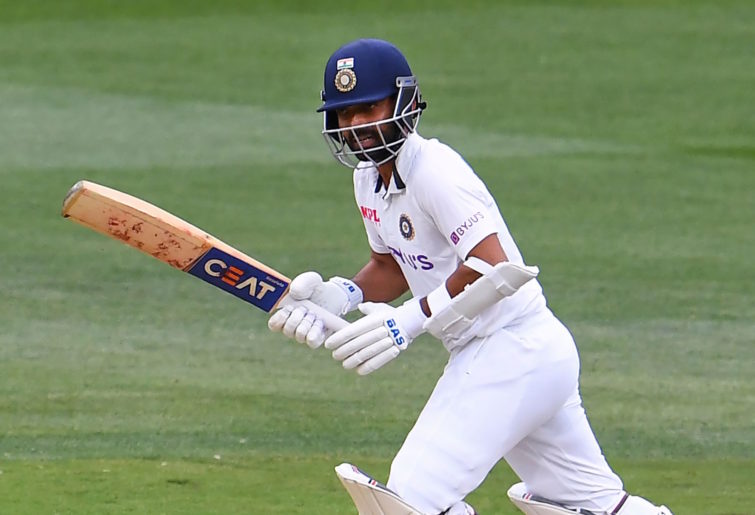The blinding spotlight on Australia’s batting failures in the second Test against India has obscured the manner in which they were cruelled by horrendous fielding.
On the first two days of that Test, India did not drop a single catch, while Australia incredibly put down six chances.
All up, the hosts turfed seven catches for the Test – one per every 18 overs they spent in the field.
Those drops cost Australia at least 100 runs. That’s how many runs the reprieved batsmen went on to make in the wake of those missed chances.
Realistically, the damage was larger than 100 runs as he knock-on effect of a drop is greater than just the runs made thereafter by the reprieved batsmen.
Their continued presence at the crease deflates the bowlers. It also allows their own batting colleagues more time to impact the scoreboard.
Crucially, six of those turfed chances came in India’s first innings as they all but batted Australia out of the match by securing a 131-run lead.
The rot began for Australia in the fourth over of India’s first innings when Marnus Labuschagne fumbled an edge by rookie Indian opener Shubman Gill.
Gill, at the time, was being toyed with by the Australian quicks. He had either edged or played and missed seven of his first 12 balls in Test cricket. The young Indian looked rattled.
If Labuschagne had taken that catch, Gill would have left the ground with just five runs to his name and, surely, some doubts in his mind about whether he could handle the Aussie attack.
Instead, Gill survived. He was given a second life not long after when Tim Paine dived to his left and dropped an inside edge.
Those two let-offs allowed Gill to start taking on the bowlers, and by the time he was eventually caught behind on 45 Australia had let the debutant gain some crucial confidence, which he then displayed in the second innings.
Now Gill goes into the third Test with scores of 45 and 35* under his belt and, quite likely, no fear of this Australian attack. Had fellow young opener Privthi Shaw been this lucky in the first Test at Adelaide he may well still be in the side and blooming in belief, too.
Gill’s skipper Ajinkya Rahane was the difference between the teams in the second Test with a match haul of 139 runs. He guided India’s first innings, after they were in trouble at 4-116, and then steadied their chase as they fell to 2-19.
Rahane was fresh from a duck at Adelaide as India were bowled out for 36, the lowest total in their history. He was also searching for form after a disappointing series in New Zealand, where he averaged just 22 as India were thumped 2-0.

Ajinkya Rahane led India with aplomb. (Photo by William West/AFP via Getty Images)
Australia duly aided Rahane by giving him three lives in Melbourne. The first of those drops, by Steve Smith at slip, allowed Rahane and Ravi Jadeja to go on to build the match-winning partnership.
By the time Rahane was let off for a third time, when Mitchell Starc dropped him on day four at long on, the match was nearly over. Yet even that mistake hurt Australia. Had Starc pouched it, India would have been 3-57.
That would have brought to the crease the out-of-form and under pressure Hanuma Vihari, averaging just 15 for the series.
Get Vihari cheaply, again, and Australia have created a selection headache for India ahead of the next Test, as well as created some momentum to end the match. These are not pointless wickets, with the result already decided, they are psychological blows in a closely-fought series.
Instead, India ended the Test in a canter thanks to Australian skipper Tim Paine’s bizarre decision to hand the ball to part-time spinner Marnus Labuschagne.
India needed 10 runs to win at that stage. Star quicks Josh Hazlewood and Mitchell Starc were both fresh, having bowled just six overs between them.
We saw the havoc Australia quicks caused in a matter of overs at Adelaide, what’s to say they couldn’t have grabbed one, two or even three more to dent India’s belief ahead of the third Test.
Instead, Paine lifted the white flag and chucked the ball to Labuschagne, who bled nine runs in one shoddy over.
This may seem like a small issue to pick up on. But these are the sorts of one-percenters teams talk about getting right. Australia should have made India sweat to the end of that chase. Rather, the tourists were gifted a comfortable finish. The same way they were gifted seven chances by the Australian fieldsmen.
Of course, had the Aussie batsmen pulled their weight, perhaps Australia could have overcome this litany of fielding errors to win the Test.
But media and fans have already spent plenty of time dissecting Australia’s failures with the blade at Melbourne.
They were obvious. Their rank fielding, however, was comparatively overlooked. No team can drop seven catches to the opposition’s one and expect to win a Test.





























































































